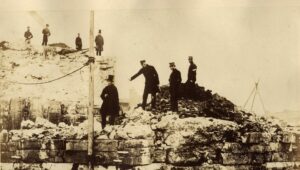- 01843 834160
- [email protected]
- Mon - Fri: 9:00 - 17:00
How to Move a Radiator

Whenever you view a house, you’ll always check out each room and sometimes there are some amenities that you wish were in a different location. This might be the case with a radiator’s location; a radiator might be in an inconvenient area and you want to move it. If this sounds like you, here’s how you can move a radiator to a better location.
Measure the radiator
You should first measure the radiator before it’s moved since you’ll need to know how much space is needed when you fit your radiator in its new location. It’s also a good idea to measure the space where you’re relocating your radiator to as this will ensure that it can perfectly fit within the space. When moving your radiator, you need to make sure that there’s a gap between the floor and the bottom of the radiator in order to install the necessary pipework.
Drain the system
To avoid flooding and causing any damages, you first need to drain your radiator. However, before you start draining, make sure to turn off your boiler and isolate the electricity supply. If you start draining and electricity is still running, it may lead to your boiler burning out and overheating. Our article on the 6 Easy Steps to Drain Your Central Heating System is easy to follow and will be helpful.
Cap the pipework
After draining your radiator and ensuring that it is empty, you can begin to cap the pipework and prepare your radiator for moving. To cap the pipework, you will usually need a push-fit cap. However, you can also do the soldering method that some plumbers utilise since it’s more secure. After removing the pipework, you should then open the TRV, which stands for thermostatic radiator valve, to ensure that any remaining water is removed from the radiator.
Install your radiator
Once the previous steps have been achieved, you can then install your radiator. However, make sure that you have the wall fixtures in order to install the radiator onto the wall. If you use a different set of fixtures, it may not fit onto the radiator, which means that you won’t be able to hang the radiator onto the wall. After installing the radiator, you should then ensure that the TRV and the pipework are closed and fitted correctly and securely before refilling the system.
Refill your system and turn your boiler on
When you’ve finished installing your radiator in its new location, you can then refill the system, turn your electricity supply back on and test the radiator. However, make sure that your boiler can reach the correct pressure. If it doesn’t, you’ll need to contact a heating engineer or a Gas Safe registered plumber. Our article on Should You Hire a Plumber or a Heating Engineer? might be able to help you choose.
This is how you can easily move your radiator. However, to move a radiator, you’ll need to have a basic understanding of plumbing. If you don’t know much about plumbing, you will need to hire a professional to get the work done. Take a look at our list of plumbing services here and our list of plumbing and heating services here.












